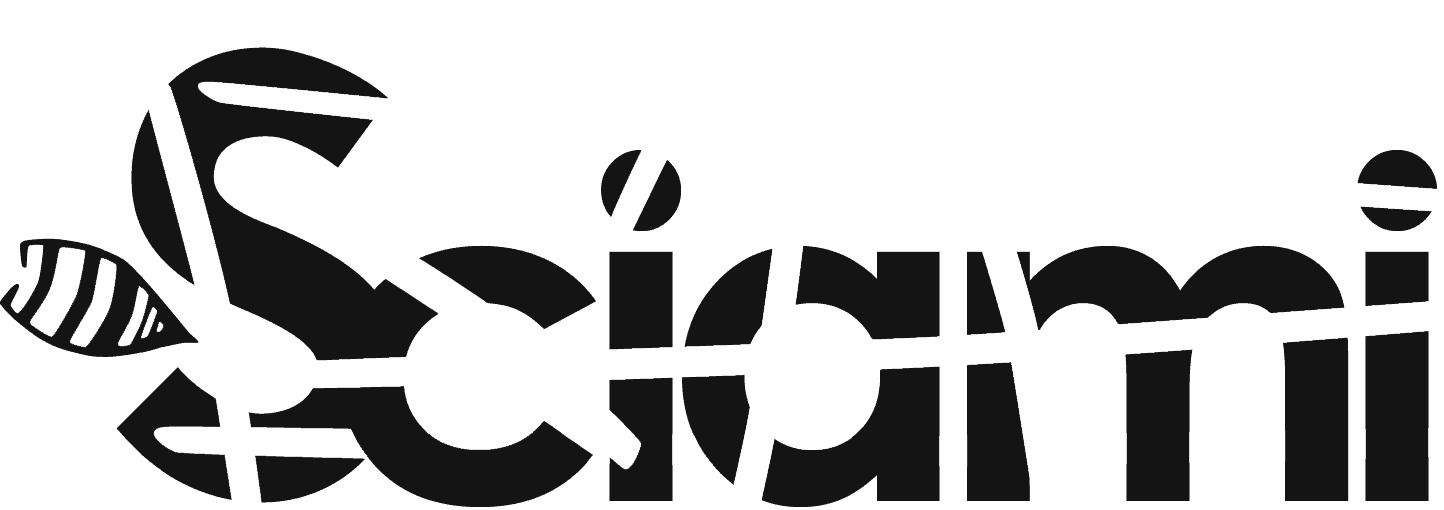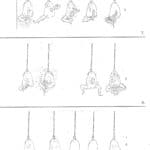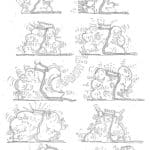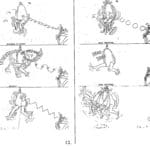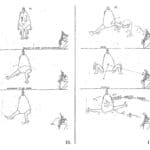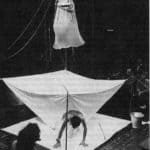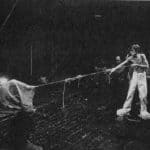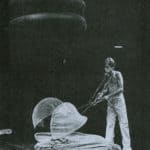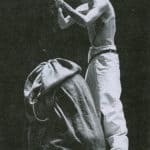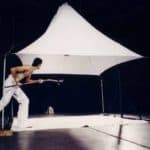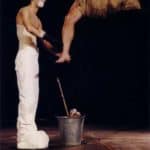Sacco, 1974.
by and with Claudio Remondi and Riccardo Caporossi
First performance Club teatro, Rome February 1974
New production, year 2003
written and directed by Claudio Remondi and Riccardo Caporossi
with Armando Sanna and Pasquale Scalzi
Sacco (“Sack”): the Victim and the Executioner
by Sabrina Galasso
Having sold their previously acquired space, the Leopardo Theatre, to pay their debts, Remondi and Caporossi invest the remaining cash in renting out a basement in Via Sant’Agata de’ Goti in the Roman area of Suburra, a venue which becomes the Club Teatro. In 1972, the duo begin work on a new piece which will be shown here in 1974.
Sacco (“Sack”) ties the artistic knot between the two collaborators; because of the organicity of the work, because of its resonance at the time in the context of Italian experimental theatre, and because of its success over the years . The “plot” is as follows: there’s a sack on stage, which is cruelly tormented by a ruthless executioner, whose instruments of torture are frightening and bizarre; the sack begins to emit inarticulate sounds, starts to move, begins to sing. Slowly, a semi-naked man appears from the sack: first his limbs, then his head, then his body. The man is free to roam on stage for a while, until the executioner captures him once more in a green cape, dragging him away.
Although the staging of Sacco differs slightly from its play-text, the script is important in as much as it is the first visual score Remondi and Caporossi produced. Akin to a storyboard, the text consists of over 200 pages’ worth of sketched, comic strip-like material which delineates actions, movements and props along with a score of words and sounds . Having internalised the figurative nature of their previous pieces, and having tweaked and dramaturgically functionalised the pictorial mould of their performances Giorni Felici and Terote, the text for Sacco inaugurates a phase during which the duo works on the detailed, finely-honed drawn image as representational code. Even the vocal score – which is performed by Remondi only – is painstakingly devised so as to indicate tones and expressions through the quality of the drawn line: the text includes lines in waves, curves, and spirals, and at times entire sentences are written in shape of an object.
Documents are published in original language. In case the translation is present, both the original and the translation are published.
Sacco, 1974
The photos, from the archive of Remondi and Caporossi, were published in Sabrina Galasso, Il teatro di Remondi e Caporossi (1970-1995), Bulzoni, Rome 1998. Photo by Cesare Accept, Bob Van Dantzig, Tommaso Le Pera, Carlo Manzato, Antonio Sperlazzo
Sacco, 2003
New prodction year 2003 Written and dircetd by: Claudio Remondi and Riccardo Caporossi With: Armando Sanna and Pasquale Scalzi
www.rem-cap.it
Sacco, 2003
New production with Pasquale Scalzi and Armando Sanna directed by Claudio Remondi and Riccardo Caporossi
Full reproduction of the spectacle
Franco Cordelli, Copione a fumetti per due nel sacco, «Paese Sera», 12 February 1974.
Rodolfo Di Giammarco, Il sacco vivente, «Corriere della sera», 8 April 1975.
Paolo Emilio Poesio, Sacco al «Rondò», «La Nazione», 5 December 1975.
Ci. Ba., Il Sacco dieci anni dopo, «Giornale d'Italia», 4 May 1982.
Manuela Zinani, Un «sacco» d'avanguardia che resiste bene al tempo, «Il Resto del Carlino», 19 January 1986.
Si. Mazz., Lo strano rapporto vittima-carnefice, «L'Arena», 2 October 2007
Antonio Pizzo, Una drammaturgia per oggetti, in Antonio Pizzo, Materiali e macchine nel teatro di Remondi e Caporossi, Napoli, I.U.O., 1992.
